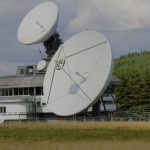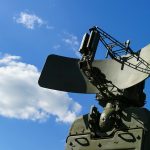The Importance of Secure RF Communications in Modern Warfare
In today’s technologically advanced battlefields, information is as vital as firepower. Military operations rely heavily on rapid, reliable communication — often transmitted over radio frequency (RF) systems. However, with increased reliance on RF communications comes the elevated risk of interception, espionage, and data breaches. As such, securing these communication channels has become a strategic priority in modern warfare.
The Risks of Unsecured RF Communications
Unsecured RF channels are vulnerable to a host of threats. Adversaries can eavesdrop on sensitive transmissions, jam signals to disrupt operations, or spoof communications to deceive troops and command centers. These tactics not only compromise missions but can endanger lives and expose national security secrets.
For example, during past conflicts, there have been documented instances of insurgent groups using commercially available scanners to intercept unencrypted military transmissions. The consequences ranged from disrupted operations to ambushes on military units, clearly demonstrating the dire need for fortified communication infrastructure.
Securing the Signal: Encryption and Beyond
To counter these threats, military organizations implement layered security measures. End-to-end encryption ensures that even if a signal is intercepted, the content remains unintelligible to unauthorized listeners. Frequency hopping techniques make it harder for adversaries to track or jam communications by rapidly switching frequencies during transmission.
In addition, RF over Fiber (RFoF) technologies offer a more secure and resilient alternative to traditional copper-based systems. By transmitting radio frequency signals as light pulses over fiber optic cables, RF over Fiber solutions reduce the risk of signal leakage and electromagnetic interference — a common vulnerability in conventional systems. These systems are also less susceptible to detection and interception, offering a covert and stable communication medium ideal for critical operations.
Real-World Impacts and Lessons
A notable case in point is the 2008 incident where intercepted RF communications reportedly exposed the locations and movements of NATO troops in Afghanistan. Analysts later revealed that the communications lacked proper encryption, highlighting a costly oversight in operational security.
In contrast, modern military forces are increasingly deploying RFoF applications in command centers, forward operating bases, and mobile platforms to strengthen their security posture. These Radio over Fiber systems are now fundamental components of secure communication infrastructure, capable of transmitting high-bandwidth data over long distances without signal degradation or exposure.
As warfare evolves, so must the systems that underpin strategic command and control. Secure RF communications are no longer optional — they are mission-critical. By embracing advanced technologies like RF over Fiber, along with robust encryption and anti-interference techniques, militaries can safeguard their most valuable asset: information.




